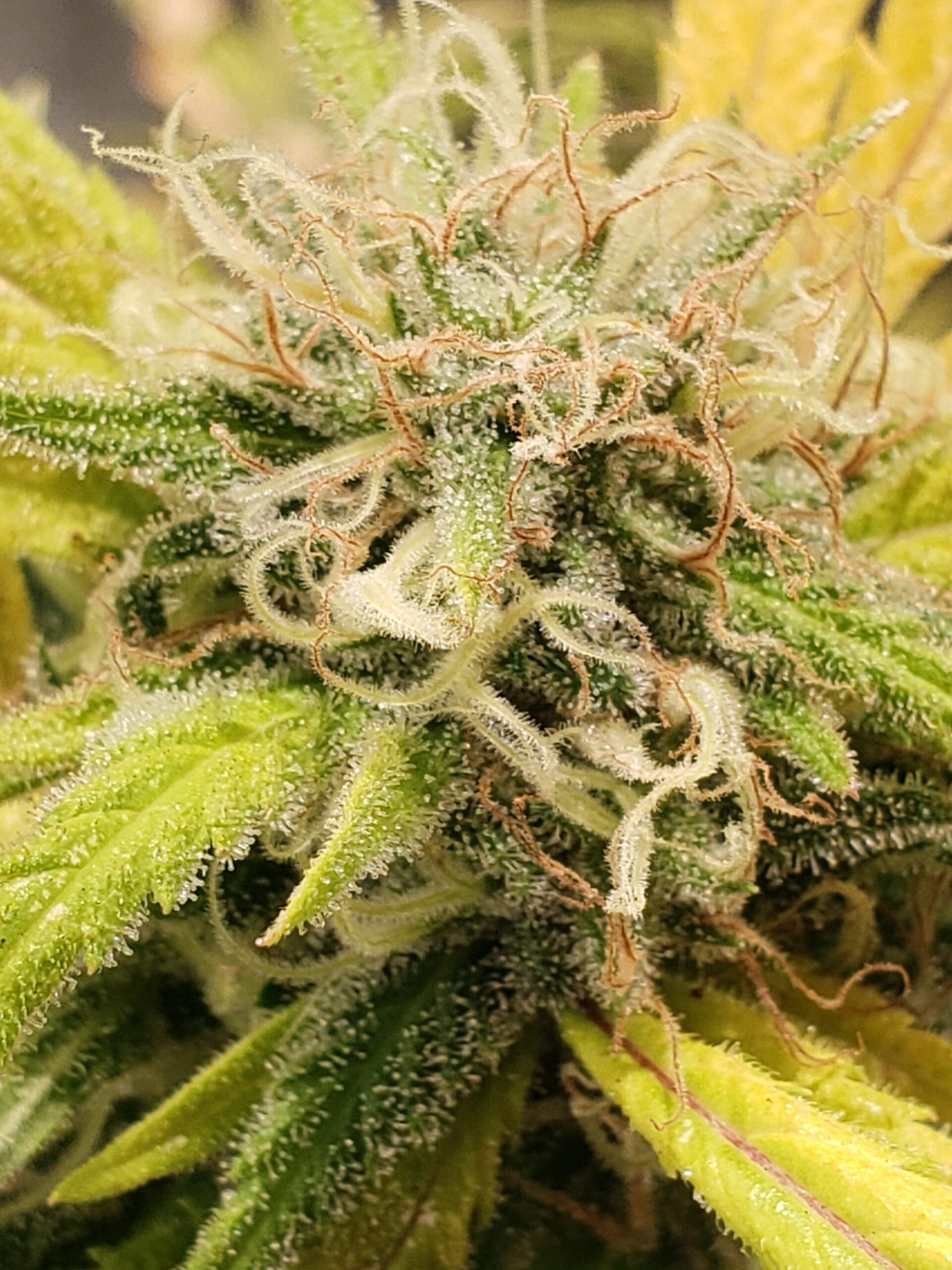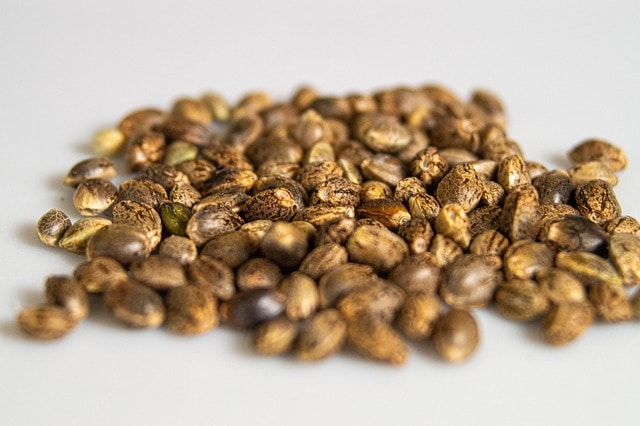The marijuana plant, like any other crop, requires specific nutrients to thrive. Providing the right amount and type of nutrients for marijuana plants is crucial in ensuring a healthy plant and maximizing yield. Understanding these requirements will not only lead to a bountiful harvest but also prevent common problems like over or underfeeding. In this article, we delve deep into the world of marijuana nutrition, shedding light on essential nutrients, recognizing signs of overfeeding or underfeeding, and more.
Essential Nutrients for Marijuana
Nutrients play a pivotal role in determining the size and yield of cannabis buds. For cannabis plants to produce large, resinous buds, they require the right mix of macronutrients and micronutrients, particularly during the flowering phase. Here’s a detailed look at the key nutrients and their impact on bud size and yield:

- Macronutrients
- Nitrogen (N): While it’s essential during the vegetative stage for foliage growth, excessive nitrogen during the flowering phase can reduce bud production. Thus, you should reduce nitrogen input when transitioning to the flowering phase.
- Phosphorus (P): It plays a crucial role in energy transfer within the plant and is vital during the flowering stage. Increased phosphorus levels during flowering support the formation of larger buds.
- Potassium (K): Essential for overall plant health, potassium helps with the production of energy and the formation of sugars, starches, and carbohydrates. It strengthens cell walls, leading to robust, dense buds.
- Secondary Nutrients
- Calcium (Ca): It aids in cell division and formation, ensuring that the plant can grow and produce large buds. Calcium also helps in the uptake of potassium.
- Magnesium (Mg): It’s a vital component of chlorophyll, ensuring effective photosynthesis. Magnesium deficiency can reduce energy production, affecting bud growth.
- Sulfur (S): Important for various plant processes, sulfur helps in the formation of essential vitamins and enzymes.
- MicronutrientsWhile needed in smaller amounts, micronutrients are crucial for various metabolic processes:
- Iron, Manganese, Zinc: These are essential for chlorophyll production and energy transfer.
- Copper: Vital for photosynthesis and respiration.
- Boron: It aids in cell division and is critical for seed and fruit development.
- Bloom Boosters: These are supplements rich in phosphorus and potassium. They are specifically designed to enhance bud formation and increase yield during the flowering phase.
- Molasses or Carbohydrate Supplements: These provide plants with sugars that feed beneficial microbes in the soil, improving nutrient uptake. This also helps in resin production, leading to stickier and more aromatic buds.
- Amino Acids: They can increase resin production and provide precursors for the production of terpenes, enhancing bud potency and aroma.
- Beneficial Microbes: Products containing mycorrhizae or beneficial bacteria can improve nutrient uptake by the roots and protect against harmful pathogens.
- Silica: This strengthens the plant’s cell walls, leading to sturdier plants capable of supporting bigger buds. It also enhances the plant’s resistance to stress.
- Enzymatic Products: These break down old roots or organic matter, turning them into usable nutrients and improving root health.

Other Considerations:
- pH Levels: Ensuring the correct pH level is vital for nutrient absorption. Cannabis plants generally prefer slightly acidic conditions, with soil pH around 6.0-7.0 and hydroponics around 5.5-6.5.
- Avoid Overfeeding: More isn’t always better. Overfeeding can lead to nutrient burn, which can significantly impact bud growth and quality. Always start with a lower dose than recommended and adjust based on the plant’s response.
By understanding the role of each nutrient and supplement, and tailoring your feeding regimen accordingly, you can significantly impact the size and yield of your cannabis buds. Remember, balance is the key; an optimal nutrient mix will produce the best results.
How to Feed Marijuana Plants
Using nutrients for marijuana plants isn’t just about dumping some store-bought fertilizer into your potting mix. It requires a careful balance, understanding your plants’ needs, and constant monitoring. Here’s a step-by-step guide:
1. Choose the Right Fertilizer
- N-P-K Ratio: This refers to the percentage of Nitrogen (N), Phosphorus (P), and Potassium (K) in the fertilizer. Depending on the marijuana plant’s growth stage (vegetative or flowering), it will require different ratios.
- Vegetative Stage: Higher nitrogen levels are crucial as this is when the plant focuses on growing green, leafy structures.
- Flowering Stage: Reduced nitrogen and increased phosphorus levels are needed for bud development.
- Type of Fertilizer: Marijuana-specific fertilizers are available in organic and synthetic forms. Organic options often come from natural sources and promote a thriving microbial life in the soil. In contrast, synthetic fertilizers can provide quicker nutrient uptake but can build up salts over time.
2. Watering Before Feeding
- Watering your plant before introducing liquid nutrients for marijuana ensures the plant’s roots are hydrated. This practice minimizes the risk of nutrient burn, which can damage the roots and hinder growth. The moisture also helps in the even distribution of the nutrients.

3. Follow Instructions—Less is More
- Starting Dosage: It’s better to err on the side of caution. Overfeeding can lead to nutrient toxicity, which can be more detrimental than underfeeding. Begin with half the recommended dosage and observe the plant’s response. If it appears healthier and more vibrant, you can gradually increase the dosage on subsequent feeds.
- Monitoring: Look for signs like yellowing leaves or burnt leaf tips, which might indicate overfeeding. Conversely, if the plant shows signs of a nutrient deficiency, like discoloration or stunted growth, consider increasing the nutrient dosage slightly.
4. Maintain Optimal pH Levels
- The pH level of your water and soil significantly affects nutrient uptake. Even with abundant nutrients for marijuana, an inappropriate pH can lock them out, rendering them inaccessible to the plant.
- For soil grows, aim for a pH between 6.0 and 7.0. For hydroponic systems or soilless grows, the pH should be slightly more acidic, between 5.5 and 6.5.
- Regularly test and adjust the pH using pH meters and pH up/down solutions. Remember, a stable pH ensures efficient nutrient absorption.
5. Flush the Soil Periodically
- Over time, nutrients for marijuana, especially from synthetic fertilizers, can accumulate in the soil. This build-up can disrupt the pH and harm the plant.
- Every few weeks, or if you suspect nutrient lockout or buildup, water your plants thoroughly with plain, pH-balanced water. This practice, known as flushing, helps to rinse out excess salts and accumulated nutrients from the soil. Ensure the water drains freely from the bottom to wash away the buildup.
- Note: It’s especially important to flush the soil in the weeks leading up to harvest. This ensures a smoother, cleaner smoke by removing excess nutrients from the buds.
Feeding marijuana plants is a continuous learning process. Regular observation, paired with a bit of research, will lead you to master the art of feeding, ensuring robust growth and bountiful yields.
Signs of Overfeeding and Underfeeding Marijuana Plants
Properly nourishing marijuana plants is a delicate balancing act. Providing either too much or too little of certain nutrients can manifest in distinct symptoms. Recognizing these early can help growers adjust their feeding regimen to ensure a healthy crop. Let’s take a closer look:

Overfeeding:
Overloading your cannabis plants with nutrients can lead to various health issues. The signs can range from subtle to glaring, and understanding them can prevent potential damage.
- Nutrient Burn: One of the most common symptoms of overfeeding:
- Manifests as brown or yellow discolorations on the tips of the leaves.
- Begins at the tip and can progress inward if not addressed.
- If left unchecked, it can spread to more areas of the plant, affecting its overall health.
- Dark, Thick, and Clawed Leaves: Indicative of nitrogen toxicity:
- Leaves become unusually dark green.
- They might appear shinier than usual.
- The shape alters, with leaves curling downwards like claws. This phenomenon is often called the “nitrogen claw.”
- Reduced Growth: A less evident but equally concerning sign:
- Plants might seem stunted, with slowed growth.
- Newer leaves may appear smaller.
- In severe cases, overfeeding can halt growth entirely.
- Brittle and Dry Leaves: A symptom of excess potassium:
- Leaves lose their suppleness and become brittle to the touch.
- They might also appear dry and may crumble when handled.
Underfeeding:
Conversely, not providing enough nutrients for marijuana can also negatively impact your cannabis plants, leading to deficiencies that manifest in various ways:
- Yellowing of Leaves: A classic symptom of nitrogen deficiency:
- Older leaves, usually those at the bottom of the plant, begin to turn yellow.
- If unchecked, the yellowing can spread to newer leaves, indicating the plant is consuming its stored nutrients.
- Red or Purple Stems: A telltale sign of phosphorus deficiency:
- Stems, and sometimes even the veins on the undersides of leaves, take on a reddish or purplish hue.
- This discoloration can be more pronounced during colder weather when phosphorus absorption is naturally reduced.
- Leaf Curling and Spotting: Indicative of a calcium deficiency:
- Leaves may exhibit curling, particularly at the edges.
- Small, brown, necrotic spots might appear on the leaves.
- In advanced stages, the deficiency might lead to malformed new growth or leaf deformation.
Correcting Overfeeding and Underfeeding in Marijuana Plants
Recognizing the symptoms of nutrient imbalances is only half the battle; taking corrective action is crucial. Here’s how to address the issues associated with both overfeeding and underfeeding:
Overfeeding:
- Nutrient Burn:
- Correction: Reduce the amount of nutrient solution you’re using by half. Gradually reintroduce nutrients while closely monitoring the plant’s response.
- Flush the soil with plain, pH-balanced water to remove excess nutrients.
- Dark, Thick, and Clawed Leaves:
- Correction: Cut back on nitrogen-heavy nutrients and ensure a balanced N-P-K ratio suited for the plant’s current growth stage.
- Again, consider flushing the soil to reset the nutrient balance.
- Reduced Growth:
- Correction: Temporarily halt nutrient addition and water with plain, pH-balanced water for a week. Gradually reintroduce nutrients at half the previous strength.
- Monitor growth and adjust nutrient levels as required.
- Brittle and Dry Leaves:
- Correction: Reduce the amount of potassium-heavy nutrients. Ensure you’re providing a balanced nutrient mix.
- Flush the soil with plain water to address immediate excess.
Underfeeding:
- Yellowing of Leaves:
- Correction: Introduce a balanced nutrient mix that is slightly higher in nitrogen. Be cautious and introduce slowly to prevent shock.
- Enhance soil health by incorporating compost or worm castings, both of which can supply organic nitrogen.
- Red or Purple Stems:
- Correction: Boost phosphorus levels using a high-phosphorus nutrient solution.
- For organic growers, consider adding bat guano or bone meal to the soil as they are rich in phosphorus.
- Leaf Curling and Spotting:
- Correction: Provide a calcium supplement or use a calcium-rich nutrient solution.
- For a natural approach, consider incorporating crushed eggshells or dolomitic lime into the soil to boost calcium levels.

General Tips:
- Always adjust nutrient levels gradually. Quick changes can shock plants and exacerbate issues.
- If you’re unsure about the exact nutrient imbalance, consider getting a soil test. This can provide clarity about what’s abundant and what’s lacking in the soil.
- Keep a gardening journal. Documenting symptoms, corrective actions, and the plant’s response over time can be invaluable for future grows.
While nutrient imbalances can seem daunting, a methodical approach combined with close observation can help rectify issues and lead to a successful harvest. Cultivating cannabis, like all plants, is as much an art as it is a science. Embrace the learning process and enjoy the journey!
If you are newer to growing make sure to check out our article to help with the basics of growing marijuana.
Maximizing Yield with Optimal Nutrients for Marijuana
Cultivating cannabis is as much an art as it is a science. To obtain the highest possible yield from your marijuana plants, you must understand and cater to their every need. A significant factor that contributes to the success of your cannabis crop is the right nutrient regimen. Here’s a detailed approach to optimize nutrients for marijuana and maximize your yield:
- Calibrate Nutrient Dosages:
Every strain of marijuana and every growth phase has specific nutritional requirements. Instead of using a one-size-fits-all approach, begin with recommended doses but be prepared to adjust. Monitoring plants closely and tailoring nutrient doses based on their growth stage and visible health ensures they receive the exact amount of nutrients they need, neither too much nor too little. - Embrace Natural Supplements:
Incorporating natural supplements into your cannabis feeding routine can significantly enhance nutrient quality. Bat guano is rich in nitrogen, phosphorus, and essential micronutrients, making it an ideal organic fertilizer. Worm castings not only provide valuable nutrients but also enhance the soil’s texture and water retention capacity. Seaweed extracts, on the other hand, are packed with growth hormones, vitamins, and trace minerals, boosting overall plant health and resilience. By incorporating these supplements, you provide a diverse array of nutrients for marijuana, ensuring a more robust and productive plant. - Engage in Regular Monitoring:
A proactive approach is always better than a reactive one. By frequently inspecting your marijuana plants, you can identify potential nutrient deficiencies or toxicities before they escalate. Use a magnifying glass to scrutinize the leaves, looking for early signs of discoloration, spotting, or curling. Recognizing and addressing nutrient issues early on can mean the difference between a thriving crop and a mediocre one. - Maintain Optimal Lighting Conditions:
Light is a pivotal factor in cannabis growth. While it doesn’t directly provide nutrients, the amount and quality of light your plants receive significantly impact how they utilize nutrients for marijuana. Photosynthesis, powered by light, is the process through which plants convert light energy into sugars, which they use for growth. If your cannabis plants don’t get the right light intensity or duration, their nutrient uptake can be adversely affected. For indoor growers, ensure that you’re using the appropriate spectrum of light for each growth phase and that your plants are receiving light uniformly. - Understand the Importance of pH:
While not mentioned in the initial list, pH plays a pivotal role in the nutrient uptake process. Maintaining a balanced pH ensures that the nutrients for marijuana are readily available to the plants. Regularly test and adjust the pH of your water and growing medium to ensure optimal nutrient absorption.

Maximizing the yield of your cannabis plants involves a harmonious blend of the right nutrients, diligent monitoring, optimal lighting, and a deep understanding of the plant’s needs at every growth stage. With dedication and a bit of patience, you can master the art of cannabis cultivation and reap bountiful rewards.
Conclusion
Understanding the nutritional requirements of marijuana is pivotal for both novice and experienced growers. By providing the optimal nutrients for marijuana, growers can ensure robust plant health, maximize yields, and prevent issues related to over or underfeeding. Remember to start with lower doses, adjust based on plant feedback, and always keep an eye out for signs of deficiencies or excesses. With patience and a keen eye, you can achieve bountiful and potent marijuana harvests.
Note: This article is intended for informational purposes only. Growing marijuana may not be legal everywhere. Always follow local laws and regulations.











